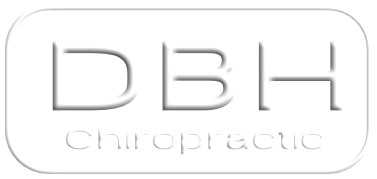Unlocking the Mysteries of Sciatic Nerve Anatomy for People Suffering With Sciatica in Colorado Springs
- DBH Chiropractic
- Mar 17, 2024
- 4 min read

For many individuals, the term "sciatica" sparks a twinge of recognition—an all-too-clear indicator of the excruciating lower back and leg pain that it entails. Yet, despite its commonality, sciatica remains shrouded in misconceptions. Appreciating the underlying sciatic nerve anatomy is more than just an academic exercise—it's a powerful way for patients to demystify and even combat the pain and discomfort associated with this condition.
Understanding the intricate web of nerves and tissues involved in the onset of sciatica is not reserved for medical professionals; patients too can grasp the basics and use this knowledge to ease their symptoms and make informed decisions about their treatment options. In this comprehensive guide, we dissect the complex sciatic nerve anatomy to empower those grappling with sciatica to take control of their health.
The Core of the Matter: Sciatic Nerve Essentials
The human body is a marvel of interconnecting systems, and at the very core of our mobility is the sciatic nerve. Running from the lower back through the buttocks and down each leg, this nerve is the longest in the human body. It comprises five nerve roots from the lumbar spine (L4-S3) and sacral spine (S1-S3), intertwining to form a robust structure vital for sensation and motor function in the lower limbs.
The Beginning and the Source
Originating from the lower lumbar and sacral regions of the spine, the sciatic nerve is actually a combination of the L4, L5, S1, S2, and S3 nerves. Picture them as joins in a river; each contributes its waters to the larger body of the sciatic nerve, adding strength and purpose to its function.
Anatomy of the sciatic nerve pathway
The sciatic nerve is a powerhouse responsible for controlling numerous muscles in the lower extremities. When it comes to sensation, the posterior thigh, the entire leg below the knee, and the soles of the feet all rely on the signal transmitters that are the sciatic nerve branches.
The Clinical Chronicle of Sciatica in Colorado Springs
Understanding the anatomy of the sciatic nerve is especially crucial for those affected by sciatica, as pain is often the result of compression or pressure on this critical structure. Known as a symptom rather than a condition, sciatica manifests as a radiating pain that follows the pathway of the sciatic nerve and may signal a more significant underlying issue.
The Triggers of Discomfort
The vertebral discs that cushion the spine can sometimes bulge or herniate, pressing against the nerves that form the sciatic nerve. In addition to disc issues, spinal stenosis, spondylolisthesis, or even something as mundane as a muscle spasm in the gluteus maximus can instigate sciatic pain.
What Sciatica Feels Like
The hallmark of sciatica is a sharp, burning, or shooting pain that can manifest suddenly or gradually worsen over time, sometimes aggravated by sneezing, coughing, or sitting for extended periods. It often affects just one side of the body and can be accompanied by numbness, tingling (paresthesia), or muscular weakness.
Navigating Treatment Through Awareness
With a grasp of the sciatic nerve's anatomy, those grappling with sciatica can better understand their treatment options, as well as actively participate in their recovery.
The Role of Imaging
MRI and CT scans can provide a visual roadmap of the sciatic nerve and its surrounding structures, helping healthcare providers pinpoint the source of the compression and devise an effective treatment plan.
Therapeutic Strategies
Treatment for sciatica takes a multifaceted approach, often combining physical therapy, pain management, and in severe cases, surgical intervention. Understanding the root cause of the pain is essential in tailoring a treatment strategy that may involve exercises to alleviate pressure, medications to manage pain and inflammation, or interventions like epidural steroid injections.
When Surgery Calls
For a small percentage of patients, conservative approaches yield little relief, and surgical options become necessary. Procedures like discectomy or laminectomy focus on alleviating the compression of the sciatic nerve, usually resulting in significant symptom improvement.
The Promise of Prevention
Equipped with knowledge about the anatomy of the sciatic nerve, patients can also take proactive steps to prevent future flare-ups.
Mindful Movement
Maintaining a healthy weight and practicing good body mechanics can go a long way in preventing the structural issues that frequently lead to sciatica. Engaging in regular exercise that strengthens the core and back muscles also provides crucial support for the spine.
Ergonomics 101
Whether at work or at home, paying attention to ergonomics and ensuring that the environment supports a neutral spine posture can reduce the risk of developing or exacerbating sciatica.
Holistic Health Practices
Incorporating practices like yoga or Pilates that emphasize flexibility and mobility can not only alleviate current symptoms but also prevent future recurrences by keeping the spine and associated structures in peak condition.
Demystifying Sciatica Through Knowledge
Sciatica can be a daunting diagnosis, but understanding the foundation of its cause and symptoms can serve as a powerful tool for patients seeking relief. By unraveling the complexities of the sciatic nerve's anatomy, individuals can demystify their pain, actively participate in their treatment, and take steps to prevent future episodes. In the end, knowledge not only unburdens us from the fear of the unknown but also empowers us to take charge of our health and well-being.
If you're grappling with the relentless discomfort of sciatica in Colorado Springs, it's pivotal to seek the expertise and guidance of professionals who understand the intricacies of your condition. DBH Chiropractic in Colorado Springs specializes in diagnosing and treating sciatic nerve issues with a personalized approach.
Our team of experts is dedicated to alleviating your pain and crafting a treatment plan that addresses the root of your symptoms. Don’t allow sciatica to dictate the quality of your life any longer. Contact us today to schedule your consultation and take the first step towards recovery and a pain-free life.



